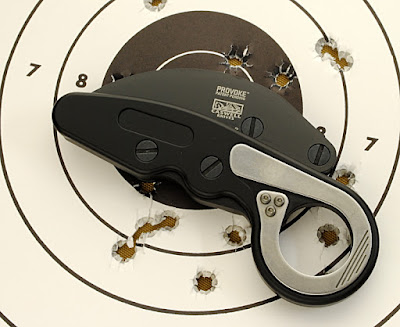Counterfeits, or perhaps the nicer term, “clones” have been
a problem for some time. In 2016, Apple
found that 90% of chargers it purchased directly from Amazon, which were using
official Apple imagery on the product listings, were fake and even dangerous.
We have often blamed counterfeits on cheap Chinese
knockoffs, but even the high quality Chinese knife manufactures are having
problems.
WE Knife Co. is moving to stop the sale of clones of their
708 Karambit model. The two primary
offenders were Böker, who sold the knife as the Taifun under their Magnum line,
and Adola, a wholesaler located in the Netherlands.
According to WE, both companies get the clone from the same
source, a Chinese knock-off company selling the knife as OEM [original
equipment manufacturer] product. Isn’t
that ironic!
OEM contracts are nothing new in the manufacturing
world. Thirty years ago both Michelin
and Goodyear made Sears tires. These
tires were quality products and made money for all three companies. Why should the knife industry be any
different? WE itself has fulfilled
plenty of OEM contracts and as I understand it, started as an OEM company.
WE’s claim is the model in question copies their original
design too closely. “We just do not like other companies cloning our designs
and making a profit of it.” Henk
Hakvoort, Marketing VP explains.
Both Böker and Adola are cooperating by removing the
offending model from their catalog, but this doesn’t solve the problem. It seems the Chinese supplier to Böker and
Adola purchases these clones from other, presumably, Chinese manufacturers not
yet identified.
If you’re an American clone collector, tough luck. Böker USA does not carry that model here and
we have never sold any of them here in the U.S.
Again, clones or counterfeits are a problem in every product
line. Don’t be chump. If you’re getting a deal that seems too good
to be true, it is. Buying one is
admitting you’re all about superficial appearance and not ability and
performance.



































